Quarterly Banking Profile December 31, 2009
The FDIC Quarterly Banking Profile for the latest quarter ending December 31, 2009 continues to show a banking industry struggling with record levels of charge-offs and noncurrent loans.
Net Charge-offs And Noncurrent Loans At Record Levels
Net charge-offs for the fourth quarter of $53 billion increased by $14.4 billion over the same period in 2008. Net charge-offs were at the highest quarterly level in 26 years for which data is available. Noncurrent loans and leases increased by $24.3 billion or 6.6% to $391.3 billion, or 5.4% of all loans and leases. The level of noncurrent loans and leases is the highest level in the past 26 years for which such data has been reported. Selected graphs shown below highlight the continuing problems of the banking industry.
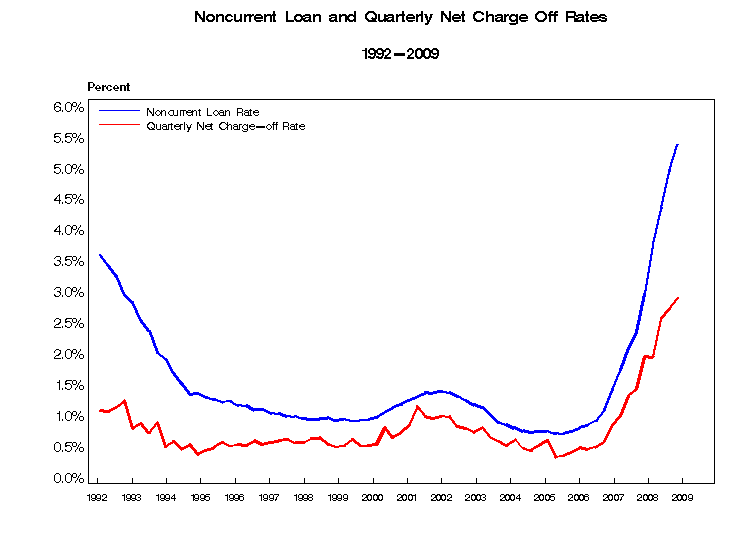
Problem Bank List Increases By 27% To 702 Institutions
During the fourth quarter, the number of insured institutions declined by 87, primarily the result of bank failures and mergers. The number of insured institutions declined by 293 for the full year, from 8,305 to 8,012. The number of new banking charters during 2009 totaled 31, the smallest number since 1942. The number of institutions on the FDIC Problem Bank List rose to 702 at December 31, 2009, up from 552 at September 30, 2009 and up from 252 at the end of 2008. Total assets of Problem Banks totaled $402.8 billion at December 31, 2009 compared to $159.0 billion at the end of 2008. The number of Problem Banks and the amount of Problem Bank assets are at the highest level since the quarter ending June 30, 1993.
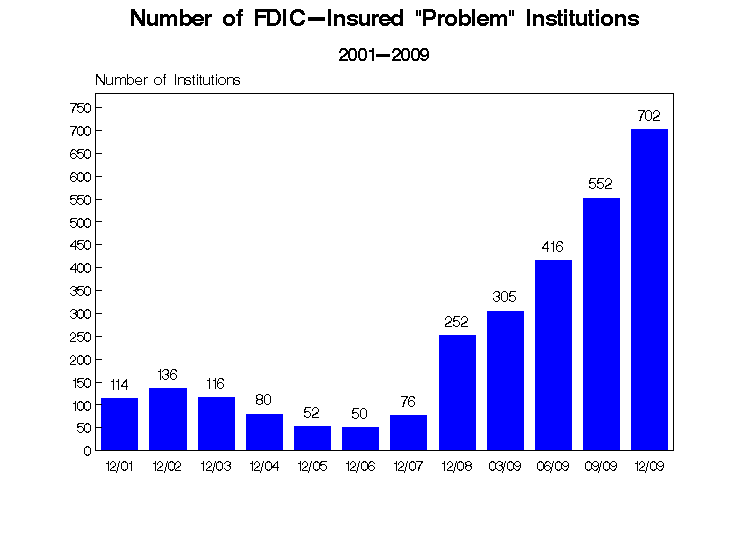
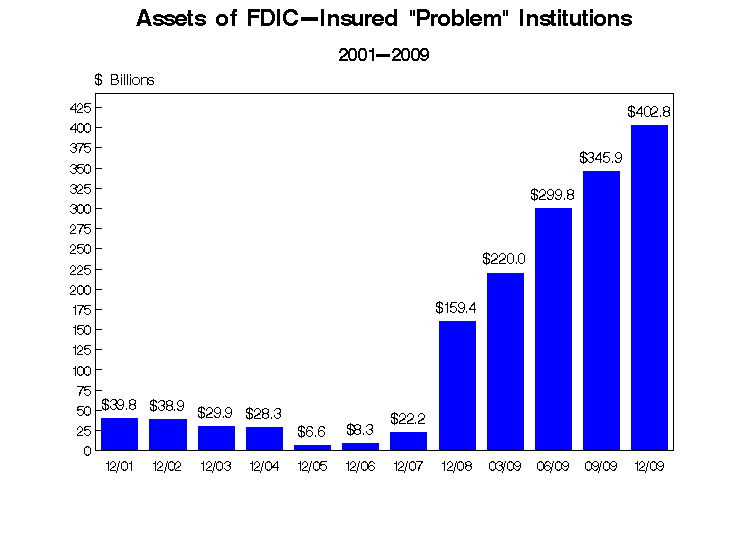 Ratio Of Reserves To Noncurrent Loans Falls
Ratio Of Reserves To Noncurrent Loans Falls
The coverage ratio of reserves to noncurrent loans and leases fell to 58%, the lowest level since 1991. There was only a $7.0 billion (3%) increase in reserves for loan and lease losses as loss provisions increased by $8 billion more than net charge-offs. The ratio of reserves to total loans and leases is at the highest level in history at 3.12%.
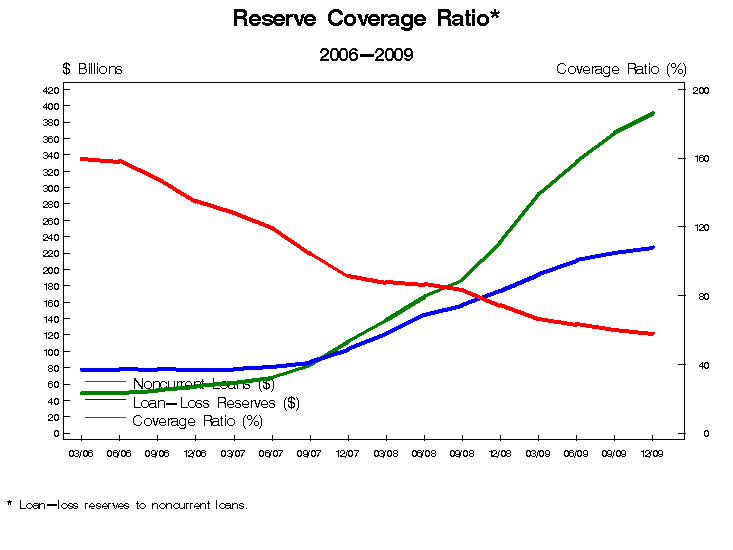
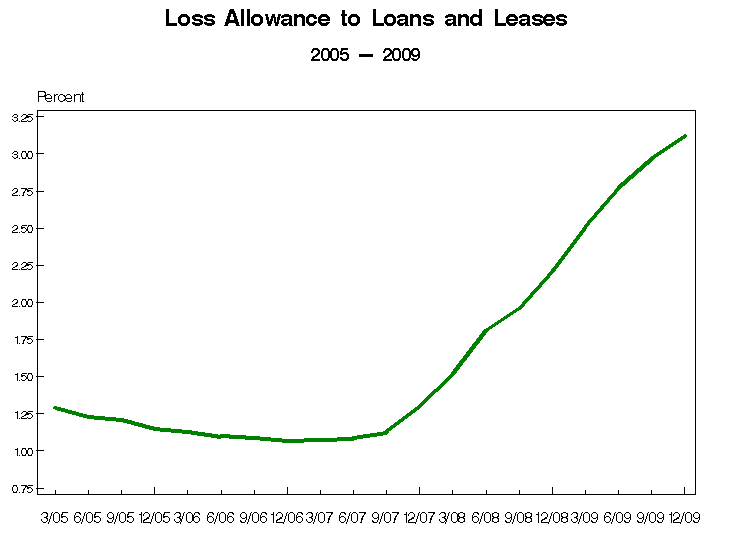
Bank Lending Plunges
For the fourth consecutive quarter, banking assets declined. For all of 2009, total banking assets declined by a stunning $731 billion (5.3%), the largest decline in the history of the FDIC. Balances in all major loan categories declined, except for credit cards which increased by $29 billion.
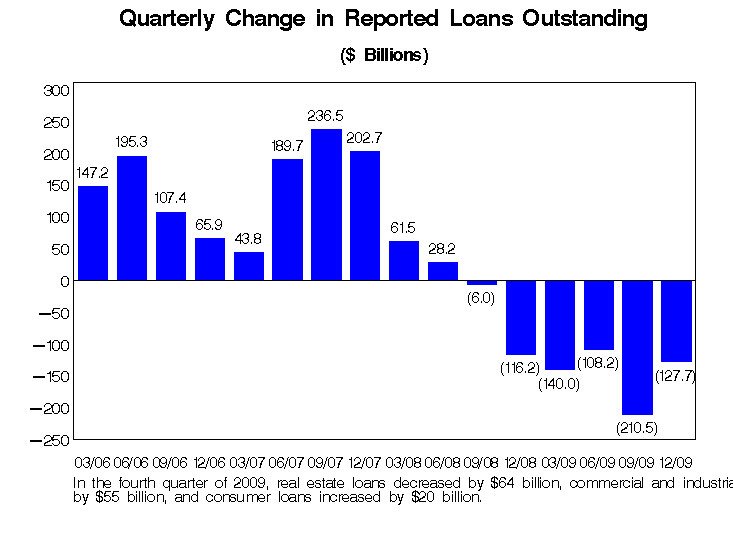
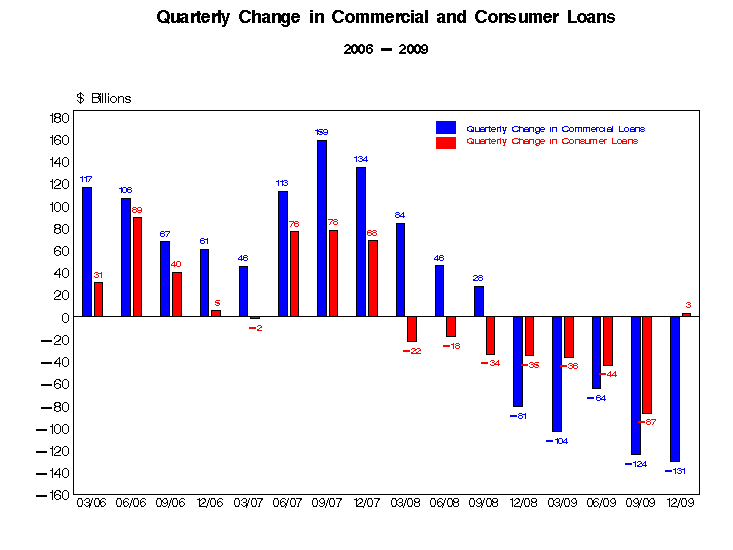 FDIC Insurance Fund At Lowest Level On Record
FDIC Insurance Fund At Lowest Level On Record
The FDIC Deposit Insurance Fund (DIF) declined during the fourth quarter to negative $20.9 billion due to provisions for bank failures totaling $17.8 billion. The DIF reserve ratio at December 31, 2009 was a negative .39%, the lowest reserve ratio on record. The negative DIF fund balance reflects $44 billion for contingent loss reserves set aside to cover estimated losses for failed banks. The combined DIF fund balance and contingent loss reserves result in total DIF reserves of $23.1 billion. Reflecting the $46 billion prepaid assessment collected from the banking industry during the fourth quarter of 2009, the FDIC has liquid resources of $66 billion at December 31, 2009, up from $23 billion at September 30, 2009.
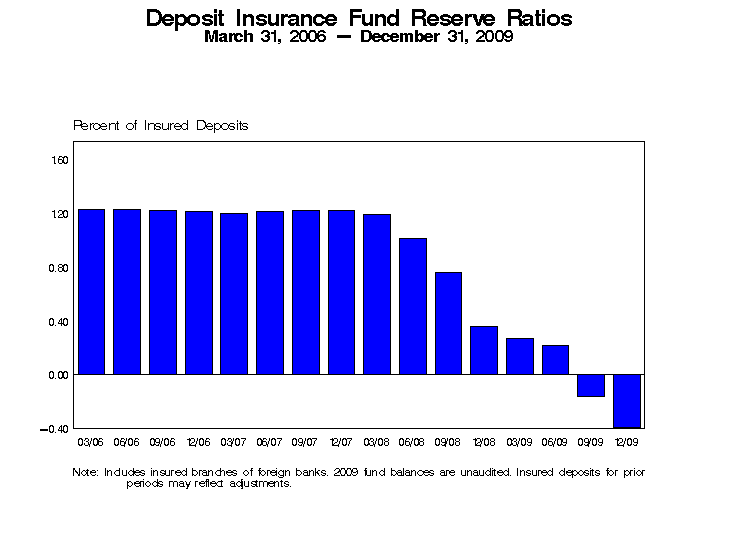
Banking Industry Struggling As One Third Of All Banks Report Losses
Although the banking industry’s fourth quarter net income was $914 million compared to a loss of $37.8 billion a year earlier, the industry clearly has a long ways to go in restoring its financial health. The bulk of the earnings improvement was at the largest banks, as 32.7% of all institutions reported net losses for the quarter. FDIC Chairman Sheila Bair gave a positive spin on the latest results, noting that “as we have said before, recovery in the banking industry tends to lag behind the economy, as the industry works through its problem assets.” Based on the large increase in Problem Banks, record levels of defaults and an economic recovery judged to be tentative by many, a real recovery in the banking industry may be many years away.
Speak Your Mind
You must be logged in to post a comment.